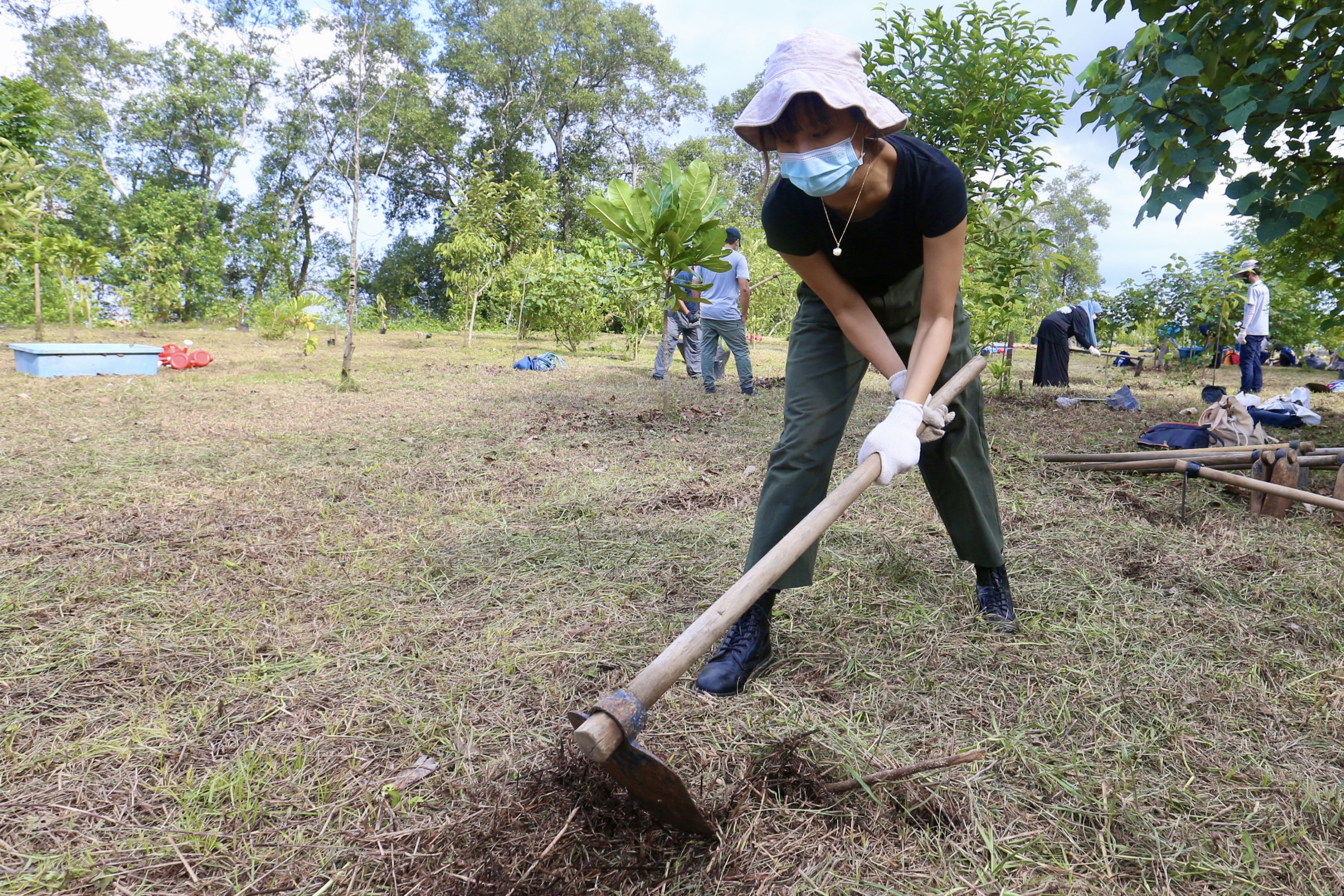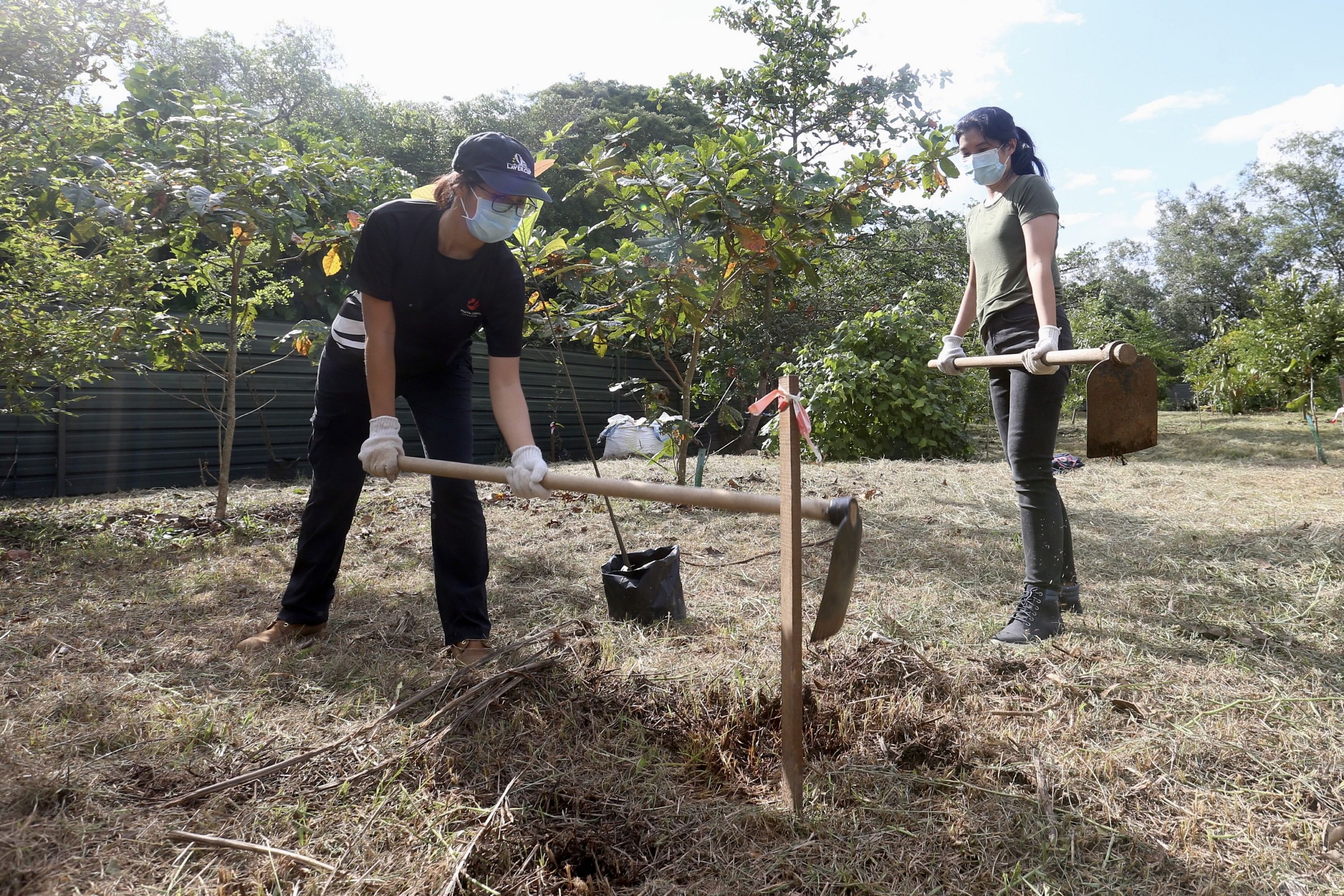SINGAPORE - The sun beat down on our sweat-stained backs as we toiled away, changkul (garden hoe) in hand, digging into the earth to plant our tree saplings.
The idea of tree planting I previously had in my head involved removing soil from the surface - and I took it to be much easier than my current struggles with the sheer weight of the gardening tool.
It helps to focus on the mechanics of digging - how the changkul is held and thrust into the soil, how its handle is levered, and how the soil is then gently and effortlessly lifted out.
Getting these techniques right makes a world of difference - as I learnt the hard way.
With plans in place to plant one million trees by 2030 to restore Singapore’s green canopy, the heart of the effort will likely have to be community-led.
This is not easy, since urbanites often lack a sense of intimacy with their natural environment.
Acknowledging this, National University of Singapore (NUS) biology lecturer N. Sivasothi coordinates regular planting sessions with environmental volunteer group NUS Toddycats at the Kranji Coastal Nature Park, where participants can get their hands dirty and play a role in reforesting the area.
The group, which has already made 19 visits - one of which I joined - to the nature park so far, will be working there for the long term, said Mr Sivasothi.
This helps to create a sense of connection with the land, and in turn, cultivates an appreciation for Singapore's natural habitats, he added.
The National Parks Board (NParks) started work to restore the coastal beach and back mangal habitats of Kranji Coastal Nature Park in August 2020. The back mangal habitat is a step further from the shore where the mangroves reside.
Native species have been selected to restore these habitats, and they include critically endangered species as well as species that help to rejuvenate the soil and attract seed dispersers such as birds. This can, in turn, stimulate the growth of other plants from adjacent forests.
The quality of the soil is affected by its composition and the area's land-use history.
The particular spot where I was digging looked unassuming and dull, but turned out to be teeming with life - earthworms, millipedes and flies. This points to the soil being fertile and healthy, whereas dry, clay-like soil means soil enhancements are needed to improve the sapling's odds of survival.

The tree sapling I planted was the Palaquium obovatum, a native, flowering species which can grow up to 40m in height.
Once the sapling was planted, I covered it with soil - careful to ensure that its root collar remained visible, so the roots could breathe, before adding a wooden stake to provide support when it grows.
Then I sprinkled the sapling generously with dead leaves to form a ring around the base. This is done to discourage the growth of weeds that can smother the tree, and to also help the tree retain moisture around the roots.
The decomposing leaves also provide nourishment to the growing sapling.

The volunteer group I joined on Feb 12 planted a total of 60 saplings - a small step forward to regenerating the area into a lush green forest, where creatures such as the white-bellied sea eagle can one day nest comfortably.
To restore a habitat is to give it new life, while at the same time, acknowledging loss.
Mr Sivasothi has fond memories of the Kranji Coastal Nature Park, where he conducted coastal cleanups for 20 years.
"As an undergrad, I worked with Professor Dennis Murphy (a veteran zoologist) at various mangrove sites, mapping and measuring trees. The park at the time was state land, and there was a lot of trash, as all the kampungs had moved out and trash from the Johor Straits accumulated in the mangrove," he said.
The wonders of the mangrove ecosystem left an imprint on him. So did the trash.

So when Ms Kate Thome, who was then the coordinator of International Coastal Cleanup Singapore, approached him to conduct cleanups at the mangroves along the Kranji coastline, he agreed.
"Lots of exceptional volunteers from NUS and the public joined the effort... and it was a healing experience," said Mr Sivasothi.
In 2014, when NParks took over the park as part of an extension of the Sungei Buloh Wetland Reserve, the mangroves were healthy and recruiting new saplings.
But the land area next to it was a wasteland.
"So in 2020, when NParks initiated their coastal reforestation project there, I asked for NUS Toddycats to be part of it," he added.
"I saw many green places disappear over the years, but here, a reserve was declared, expanded, and eventually extended to include the Mandai Mangrove and Mudflat (nature park) in 2018. This was healing for my heart," said Mr Sivasothi.
I ended the day by virtually planting my tree on the map at NParks' trees.sg website and made a promise to myself to return soon - to monitor my sapling's health and to plant more trees.
With more than 600,000 trees to be planted by 2030, I hope that more people step forward and help restore these natural habitats of our island home.
Those who want to volunteer for tree planting can look for opportunities at TreesSG's website.


